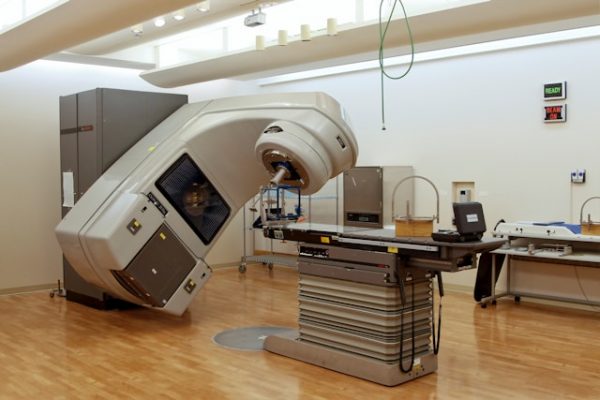The straightforward answer is no – Roobet is not legal in any state within the United States. This popular cryptocurrency casino platform has been completely restricted from operating in American territory since its launch, and the situation remains unchanged in 2025. Understanding why this restriction exists and what alternatives are available requires diving deep into the complex web of federal gambling laws, state regulations, and licensing requirements that govern online gaming in America.
Why Roobet Cannot Operate in the USA
The prohibition of Roobet in American territories stems from multiple regulatory barriers that make it virtually impossible for the platform to obtain proper authorization. The primary obstacle lies in the platform’s reliance on NetEnt game providers, which lack the necessary state-specific licenses required for USA operations.
Federal Legal Framework Blocking Roobet
The Unlawful Internet Gambling Enforcement Act (UIGEA) of 2006 serves as the cornerstone of federal restrictions preventing platforms like Roobet from serving American customers. This legislation prohibits gambling businesses from “knowingly accepting payments in connection with the participation of another person in a bet or wager that involves the use of the Internet and that is unlawful under any federal or state law.”
The Federal Wire Act of 1961 adds another layer of complexity, originally designed to combat organized crime but now interpreted to restrict interstate gambling communications.

These federal regulations create an environment where financial institutions must actively identify and block transactions related to unauthorized gambling activities.
State-by-State Regulatory Challenges
Unlike many countries with unified gambling regulations, the United States operates under a complex state-by-state system where each jurisdiction maintains its own gaming laws. Even in states that have legalized online gambling – such as New Jersey, Pennsylvania, and Nevada – operators must obtain specific state licenses and comply with local regulations.
| State Category | Examples | Gambling Status | Roobet Access |
|---|---|---|---|
| Fully Legal Online Gambling | New Jersey, Pennsylvania, Michigan | Licensed operators only | ❌ Blocked |
| Limited Online Gambling | Nevada (sports only) | Restricted categories | ❌ Blocked |
| No Online Gambling | Utah, Hawaii | Completely prohibited | ❌ Blocked |
| Pending Legislation | California, Texas | Under consideration | ❌ Blocked |
The NetEnt Licensing Problem
A crucial factor in Roobet’s inability to serve American players lies in its primary game supplier, NetEnt. This Swedish gaming provider does not possess the required state-specific licenses for USA operations, making it impossible for any casino heavily reliant on NetEnt games to legally operate in American markets.
NetEnt’s restriction list explicitly includes the United States among territories where their games cannot be supplied, regardless of the platform’s licensing status. This creates a fundamental barrier for Roobet, whose game library predominantly features NetEnt titles.
Curacao Licensing: Why It Doesn’t Work for USA Players
Roobet operates under a Curacao eGaming license, which has become a popular choice for many international online casinos. However, this licensing arrangement creates several issues for American players and does not provide legal authorization to serve USA markets.
Limitations of Offshore Licensing
The Curacao Gaming Control Board, while legitimate within its jurisdiction, lacks the authority to override USA federal and state gambling laws. This means that while Roobet may operate legally from Curacao’s perspective, it remains prohibited from accepting American customers under USA regulations.
Key limitations include:
- No USA Legal Protection: American players have no legal recourse under USA law
- Banking Restrictions: USA financial institutions must block transactions
- Tax Complications: Unclear reporting requirements for USA players
- Regulatory Conflicts: Direct violation of UIGEA provisions
Legal Risks of Using VPN to Access Roobet
Many American players attempt to circumvent geographical restrictions using Virtual Private Network (VPN) services. However, this approach carries significant legal and practical risks that extend far beyond simple terms of service violations.
Federal Legal Consequences
Using a VPN to access restricted gambling sites may constitute:
- Wire Act Violations: Interstate transmission of gambling information
- UIGEA Circumvention: Knowingly participating in prohibited transactions
- Potential Criminal Charges: Though rarely prosecuted, technically possible
- Financial Institution Penalties: Banks may close accounts for suspicious activity
Platform Detection and Account Closure
Roobet employs sophisticated detection systems to identify and block VPN usage. Players caught using these services face:
- Immediate account suspension
- Forfeiture of winnings and deposits
- Permanent platform exclusion
- No customer support recourse
Know Your Customer (KYC) Verification Issues
Even if players successfully create accounts using VPNs, they inevitably encounter problems during the mandatory identity verification process. Since Roobet requires proof of address and identification documents, American players cannot complete this process without providing false information, which constitutes fraud.
Legal Alternatives to Roobet for American Players
Fortunately, American players have access to numerous legitimate gambling platforms that operate within USA regulatory frameworks. These alternatives provide similar gaming experiences while ensuring full legal compliance and player protection.
Sweepstakes Casinos: The Primary Alternative
Sweepstakes casinos represent the most accessible legal alternative for American players, operating under sweepstakes laws rather than traditional gambling regulations.
Top Sweepstakes Casino Options:
| Platform | Key Features | States Available | Bonus Offering |
|---|---|---|---|
| Stake.us | Crypto-friendly, original games | 47 states | Social casino model |
| Chumba Casino | Wide game selection, established brand | Most states | Free coins daily |
| LuckyLand Slots | Slot-focused, mobile optimized | 47 states | Welcome package |
| WOW Vegas | High-quality graphics, varied themes | Most states | No deposit bonus |
State-Licensed Online Casinos
For players in states with fully legalized online gambling, licensed operators provide the most comprehensive and secure gaming experience.

Licensed Casino Options by State:
- New Jersey: BetMGM, Caesars, DraftKings Casino
- Pennsylvania: PlayStar, BetRivers, FanDuel Casino
- Michigan: PointsBet Casino, Golden Nugget, Barstool Casino
- West Virginia: DraftKings, FanDuel, BetMGM
Crypto-Friendly Legal Platforms
Several legitimate platforms cater to cryptocurrency users while maintaining full USA compliance:
- BitStarz – Licensed in multiple jurisdictions, accepts USA players from legal states
- mBit Casino – Crypto-focused with proper licensing
- CoinCasino – Bitcoin-based platform with regulatory compliance
Understanding the Financial Landscape
The financial aspects of online gambling for American players involve complex considerations that extend beyond simple deposit and withdrawal methods.
Banking Restrictions and UIGEA Compliance
USA financial institutions maintain strict compliance with UIGEA requirements, actively monitoring and blocking transactions related to prohibited gambling activities. This creates challenges even for legal gambling platforms and requires players to understand:
- Credit Card Blocks: Most major banks decline gambling-related transactions
- Cryptocurrency Considerations: While more anonymous, still subject to regulatory scrutiny
- Tax Reporting Requirements: All gambling winnings must be reported to the IRS
- Anti-Money Laundering (AML) Procedures: Enhanced scrutiny on large transactions
Taxation of Online Gambling Winnings
American players must understand their tax obligations regardless of where they gamble online:
- Federal Income Tax: All gambling winnings are taxable income
- State Tax Variations: Additional state taxes may apply
- Record Keeping Requirements: Players must maintain detailed gambling records
- Professional Gambling Classification: Frequent players may be classified as professionals
The Future of Online Gambling Regulation in America
The landscape of online gambling in the United States continues evolving rapidly, with multiple states considering legalization and federal attitudes potentially shifting.
Emerging State Legislation
Several states are actively considering online gambling legalization:
- California: Multiple ballot initiatives and legislative proposals
- Texas: Growing political support for regulated online gambling
- Florida: Complex tribal gaming agreements affecting online options
- New York: Potential expansion beyond sports betting
Federal Regulatory Evolution
Federal approaches to online gambling show signs of potential modernization:
- Safe Harbor Provisions: Potential protections for state-licensed operators
- Banking Modernization: Possible UIGEA clarifications for legal operators
- Interstate Compacts: Growing cooperation between legal gambling states
- Cryptocurrency Integration: Regulatory frameworks for digital currencies
Common Questions and Detailed Answers
Is there any way to legally play Roobet in the United States?
No, there is currently no legal method for American players to access Roobet. The platform is explicitly prohibited in all 50 states due to federal gambling laws and the lack of proper state licensing. Using VPN services to bypass these restrictions violates both federal law and the platform’s terms of service.
What makes sweepstakes casinos different from traditional online casinos?
Sweepstakes casinos operate under promotional sweepstakes laws rather than gambling regulations. Players receive free “sweeps coins” through various promotions and can redeem winnings for cash prizes. This model allows operation in most states without requiring traditional gambling licenses.
Can Americans face criminal prosecution for using offshore gambling sites?
While technically possible under federal law, criminal prosecution of individual players is extremely rare. Federal authorities typically focus on operators rather than players. However, players may face account closures, frozen funds, and banking restrictions.
Why don’t platforms like Roobet simply obtain USA licenses?
The process of obtaining state-by-state gambling licenses in America is extremely complex and expensive. Requirements include:
- Separate licenses for each state
- Extensive background checks on all principals
- Significant bonding and insurance requirements
- Compliance with varying state regulations
- Ongoing regulatory fees and reporting obligations
Are crypto transactions safer for accessing restricted gambling sites?
No, cryptocurrency transactions do not provide legal protection for accessing prohibited gambling sites. While they may offer more privacy, they remain subject to the same federal restrictions and regulatory scrutiny as traditional payment methods.
What should American players look for in legal gambling alternatives?
When choosing legal alternatives, American players should prioritize:
- Proper Licensing: State licenses or legal sweepstakes operation
- Regulatory Compliance: Full adherence to federal and state laws
- Player Protection: Responsible gambling tools and dispute resolution
- Financial Security: Segregated player funds and reliable payouts
- Customer Support: Responsive support for American players
Conclusion: Navigating Online Gambling as an American Player
The question of whether Roobet is legal in the USA has a clear answer: it is not, and this situation is unlikely to change in the foreseeable future. The combination of federal restrictions, state-by-state licensing requirements, and specific NetEnt limitations creates insurmountable barriers for the platform’s USA operations.
However, American players are not without options. The rapidly expanding landscape of legal online gambling includes numerous sweepstakes casinos, state-licensed platforms, and crypto-friendly operators that provide safe, regulated gaming experiences. These alternatives often offer superior player protections, reliable customer support, and compliance with taxation requirements.
The key for American players lies in choosing legitimate, licensed operators that operate within the legal framework rather than attempting to circumvent restrictions through VPN services or other workarounds. As the regulatory landscape continues evolving, the number of legal options will likely continue expanding, providing American players with increasingly diverse and sophisticated online gambling opportunities.
For those interested in cryptocurrency-based gambling, platforms like Stake.us offer legal alternatives that capture much of Roobet’s appeal while maintaining full regulatory compliance. The future of online gambling in America appears bright, with expanding legalization and improved player protections creating a more favorable environment for legitimate operators and players alike.




